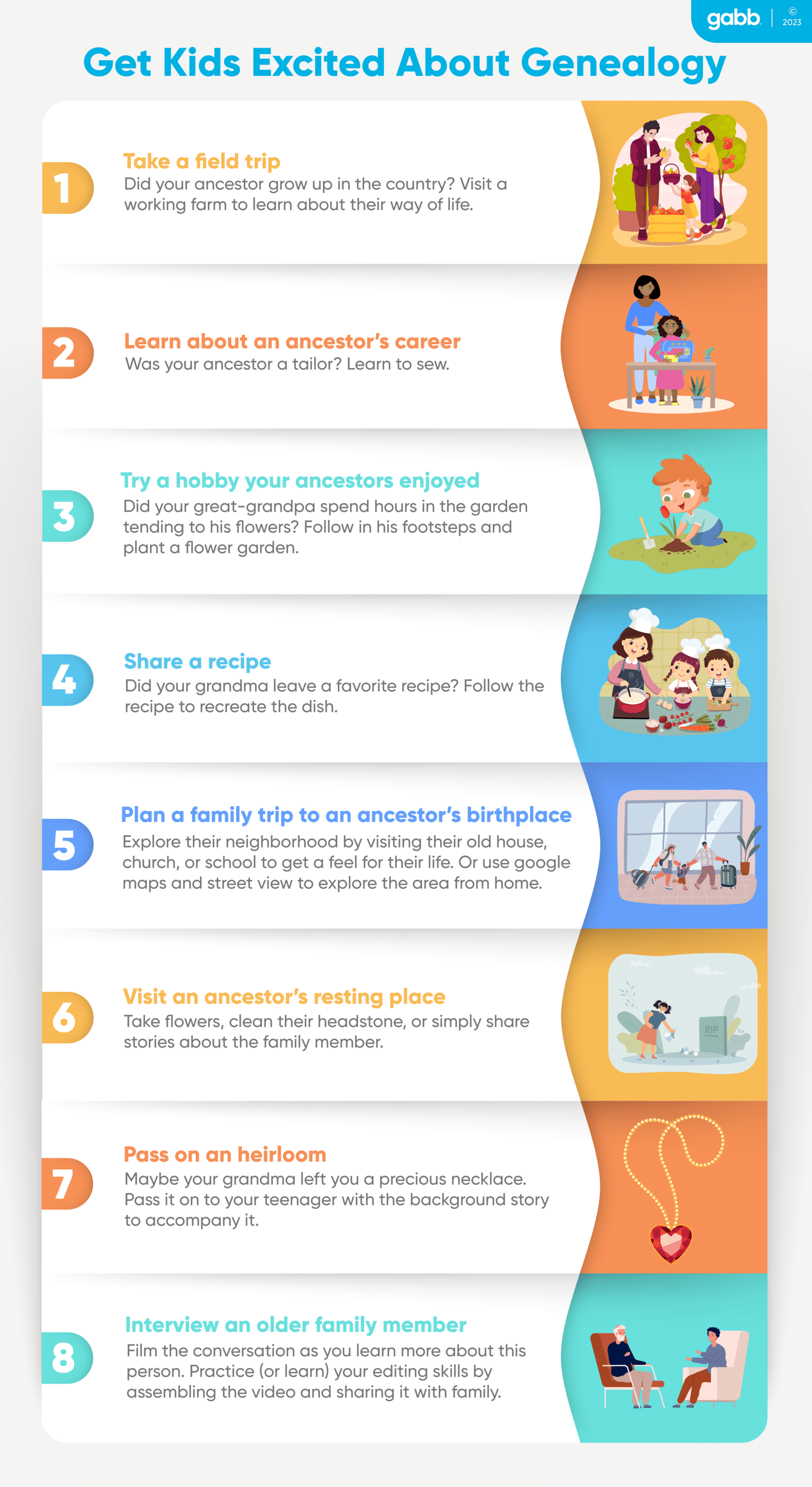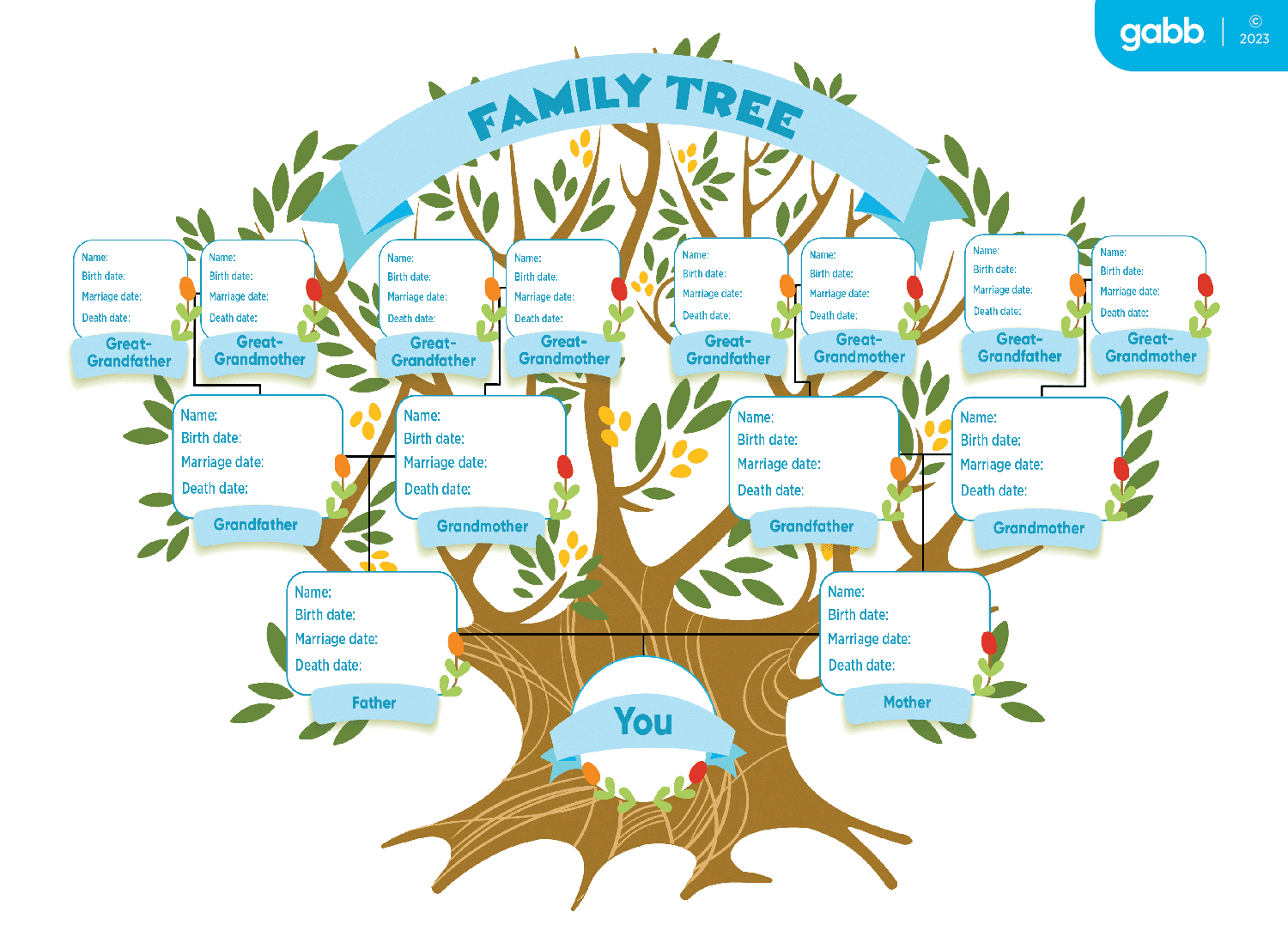With Memorial Day around the corner, many families will be honoring loved ones who died while serving in the military. It’s also a time to remember all our family members who have passed and reflect on the impact they have had in our lives.
Genealogy has grown in popularity in recent years. Digital archive searches increased 23% between March 2020 and March 2021. [3] Some report that genealogy is one of most popular hobbies in the United States. [1]
Technology has made research easier than ever, and this applies to genealogy. Tech-savvy kids can easily pick up this hobby and learn about their heritage. In this article we will give you a deeper look at the benefits of researching family history and tips to get your child excited about it.
Genealogy As a Way to Increase Connection and Combat Loneliness
Children can benefit greatly from hearing stories about their ancestors. One study found that kids who know more about their families and roots are more resilient and can moderate the effects of stress better than those who do not. [1]
These traits are especially important to instill in children as they combat the alarming increase in anxiety and depression, with ⅓ of young people reporting continued feelings of sadness and a lack of hope. In a world with increasing loneliness, genealogy can help our kids feel more connected and gain a sense of belonging.

Kids Can Benefit From Family Stories
Most of us have been at extended family gatherings. These events can be full of laughter and fun, but can also be a little uncomfortable or awkward when we get stuck talking to a relative we don’t know very well. Enter genealogy. Discussing our recent family history findings can be a great icebreaker and a way to bond with distant relatives. [1]
The stories we tell ourselves about our ancestors have the power to shape us.
—Maud Newton, author of Ancestor Trouble. [2]
Learning about our family history can bring living family members closer together. Parents and children will benefit from the extra time spent together researching and telling stories. Kids can also feel a sense of belonging when they learn about where they came from.
Some of the skills needed for genealogy include writing, communicating, researching, and reading. Kids who participate in this work can further develop these skills, which can give them an advantage in school and later professionally.
How to Get Kids Excited About Genealogy
Genealogy is often thought of as a hobby for the elderly. Parents can reframe this idea by making family history and relationships an integral part of everyday life. Parents can model the importance of genealogy by participating in research themselves.
Together we can talk and learn about our ancestors in fun ways.
How To Do Genealogy Research
Genealogy is all about dates and locations. The more information found, the easier it will be to find additional ancestors. Your child will want to find any of the following details to climb your family tree:
- Full name
- Birth date
- Birth place
- Marriage date
- Marriage place
- Death date
- Death place
The easiest way to get a child started is to create a family tree, starting with themselves. They can write down their full name, birthdate, and birthplace. Next, list their parents. Again full names, birthdates, birthplaces. If marriage and death dates and locations are available, add it to the tree.
From there they will want to climb up the branches of their family tree by moving on to grandparents. Write down all the key dates and locations mentioned above.
Often parents can help the child get to this point from memory, with little research involved. When we get to the place where we struggle to come up with names or dates, it’s time for the research to begin.
There are many websites available. Some popular ones are FamilySearch (free), Find a Grave (free), and Ancestry (monthly fee).
Start the research by looking through these online records for the last known ancestor, with their name, and any date or location known. Records will be pulled up and hopefully one will match the ancestor.
Any vital record (birth, marriage, and death certificates) found will likely include the name of that person’s parents, and oftentimes their age. Work back from the date (date minus age) to figure out the new ancestor’s approximate birth year. Next, search records for the new ancestor, always looking for those names, locations, and dates to continue on.
Some may not find any records of their ancestors online. That’s perfectly normal. It’s estimated that FamilySearch has copies of ¼ of all vital records on Earth in a vault. [2] That leaves ¾ of all vital records scattered throughout the world in churches and municipalities.
Personally contacting churches, genealogical societies, or the office of vital records of an ancestor’s birthplace can yield great results. Some locations allow people to search through their physical records, while others have staff to do the digging.
Not all the records FamilySearch owns have been digitized. Volunteers work full-time taking pictures, and uploading them to the website. It takes work and time. Once records are digitized, they must be indexed for easy access.
Indexing (Kids can be involved!)
What is indexing? It involves looking at pictures of vital records—some are typed, but most are handwritten—and typing out the information into a computer database so it can be searchable.
Imagine if a country were to scan all its vital records to put online for public access, but you have to scroll through and read every one to try to find your great-great-grandparent’s birth certificate. Good luck finding that needle in a haystack!
Indexing solves this problem. Vital records including government records, military archives, federal census records, birth and death certificates, land records, and marriage certificates are crucial to making it possible for genealogical records to be searched online. Instead of browsing for hours, you can type your ancestor’s name on the website and all of their indexed records will appear at your fingertips.
Kids and adults can conveniently index through mobile apps on their phones, such as the Get Involved, Participa, and FamilySearch apps. It’s a wonderful way to serve and anyone can participate.
It can be fun to index a set of records from a location where we have ancestors. Young people can catch a glimpse of what life was like during that time.
DNA Testing
In recent years DNA testing has become a popular and easy way to trace our ethnic origins. DNA testing services need only a little bit of spit or a cheek swab to return results. These results can connect relatives within the provider’s website, shed light on family medical history, and even break down genomes to add understanding about a person’s traits.
Did you know that siblings will not have identical results? We all inherit 1/2 of our DNA from each of our parents, but the traits we inherit can vary widely between siblings. It can be fun for kids to compare the findings!

Start Your Genealogical and Family History Now
Starting on this journey can be fun for the whole family. Help children learn how to get started, and you may be surprised by how quickly they catch on.
Kids can benefit so much from understanding where they come from. Stories of ancestors who overcame hardships will encourage and inspire our kids to do the same. Not-so inspiring stories will serve as a cautionary tale. Technology is everywhere, and we can teach our children to use it for good.
Receive more resources and support to help your family on our blog.
References
- [1] Feiler, Bruce. March 15, 2013. The Stories That Bind Us. New York Times. Retrieved February 14, 2023, from https://www.nytimes.com/2013/03/17/fashion/the-family-stories-that-bind-us-this-life.html
- [2] Jasanoff, Maya. May 2, 2022. Our Obsession with Ancestry has Some Twisted Roots. The New Yorker. Retrieved February 14, 2023, from https://www.newyorker.com/magazine/2022/05/09/our-obsession-with-ancestry-has-some-twisted-roots-maud-newton-ancestor-trouble
- [3] Zhou, Amanda. May 29, 2021. Genealogy has been a hot pandemic activity. Here’s how you can get started. The Seattle Times. Retrieved February 14, 2023, from https://www.seattletimes.com/seattle-news/genealogy-has-been-a-hot-pandemic-activity-heres-how-you-can-get-started/#:~:text=Genealogy%20research%20as%20a%20hobby,retrieved%20through%20the%20state%20website.











Success!
Your comment has been submitted for review! We will notify you when it has been approved and posted!
Thank you!